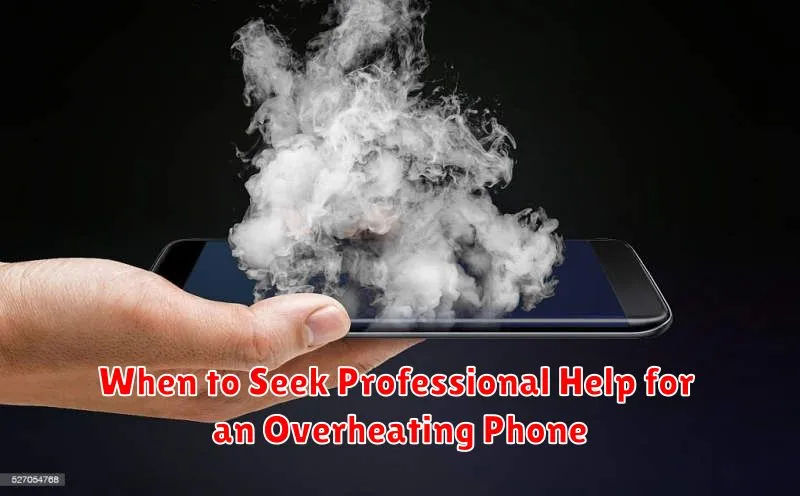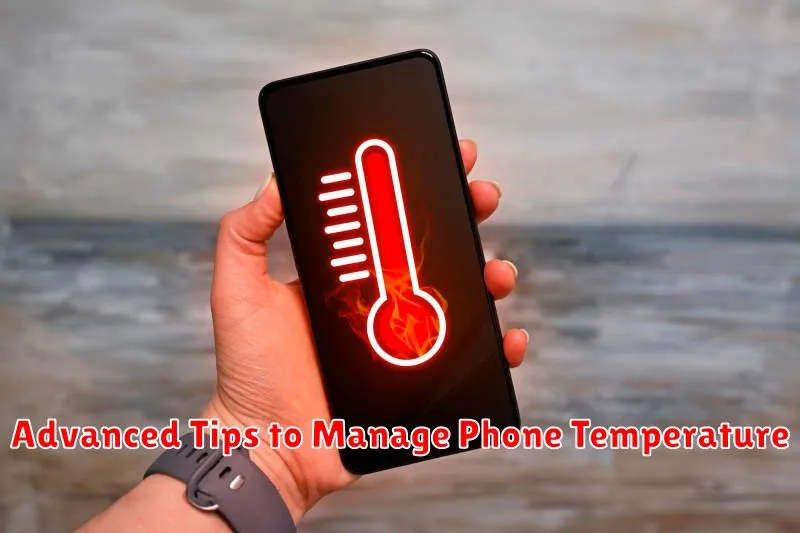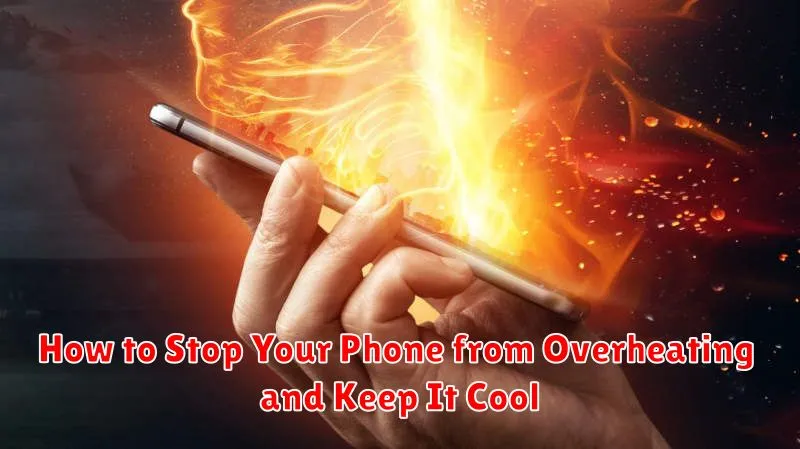Is your phone constantly overheating? A hot phone can be more than just an annoyance; it can significantly impact performance, battery life, and even cause permanent damage. This comprehensive guide will provide you with practical and effective strategies on how to stop your phone from overheating and keep it running cool, ensuring optimal performance and longevity. Learn how to identify the causes of overheating, implement preventive measures, and troubleshoot existing heat issues. Whether you’re a heavy user, a gamer, or simply want to protect your investment, understanding how to manage your phone’s temperature is crucial.
From understanding the signs of an overheating phone to implementing proactive cooling solutions, this article covers it all. We will delve into the common culprits behind phone overheating, including demanding applications, environmental factors, and charging habits. Discover simple yet effective tips and tricks to keep your phone cool, such as adjusting settings, optimizing usage patterns, and utilizing accessories designed for heat dissipation. Don’t let overheating compromise your phone’s functionality; take control and learn how to maintain a healthy operating temperature.
Recognizing the Signs of an Overheating Phone
An overheating phone can manifest in several noticeable ways. The most obvious sign is a significant increase in temperature. Your phone may feel uncomfortably warm or even hot to the touch.
Performance issues can also indicate overheating. You might experience sluggishness, app crashes, or a general slowdown in responsiveness. The phone’s battery may also drain rapidly, even when not in use.
In some cases, the phone may display a warning message about its temperature. This is a clear indication that the device is exceeding its safe operating temperature and requires immediate attention.
Another potential sign is the camera flash becoming temporarily disabled. The phone may restrict flash usage to prevent further heat buildup and potential damage to the camera components.
Finally, in extreme cases, the phone might shut down unexpectedly. This is a protective measure to prevent permanent damage caused by excessive heat.
Common Causes of Phone Overheating
Several factors can contribute to a phone overheating. Understanding these causes can help you take preventative measures.
Environmental Factors
Direct sunlight is a major culprit. Leaving your phone in a hot car or exposed to direct sunlight for extended periods can quickly raise its temperature. High ambient temperatures can also play a role, especially during hot weather.
Demanding Applications and Activities
Graphics-intensive games and streaming high-definition video put a significant strain on the phone’s processor, generating excess heat. Multitasking, running multiple apps simultaneously, can also contribute to overheating.
Hardware Issues
A failing battery can generate excessive heat. Similarly, other malfunctioning hardware components can contribute to overheating. A phone case that insulates the phone too much can also trap heat.
Software Issues
Software bugs and operating system glitches can sometimes cause excessive processor activity, leading to overheating. Background processes, even when you’re not actively using an app, can also consume resources and generate heat.
Quick Fixes for an Overheating Phone
If your phone is overheating, there are several immediate actions you can take to cool it down quickly.
First, remove the phone’s case. Cases, especially thicker ones, can trap heat and exacerbate overheating issues. This allows for better heat dissipation.
Next, close any unnecessary apps running in the background. These apps consume processing power, which generates heat. Check your phone’s recent apps list and swipe away anything you’re not actively using.
Reduce the screen brightness to a lower setting. A bright screen consumes significant power and contributes to heat buildup.
Turn off power-intensive features such as Bluetooth, Wi-Fi, and location services if you don’t need them at the moment. These features demand considerable processing power, leading to increased heat generation.
Finally, if possible, put your phone in airplane mode. This disables all cellular, Wi-Fi, and Bluetooth radios, significantly reducing power consumption and heat generation. This is particularly useful if you are in an area with weak signal reception, as the phone will work harder to maintain a connection.
Preventing Your Phone from Overheating in the Future
Proactive measures can significantly reduce the risk of your phone overheating. Regularly update your phone’s operating system and apps. These updates often include performance improvements and bug fixes that can address overheating issues.
Manage your app usage effectively. Close apps running in the background when not in use. Limit the use of resource-intensive apps, especially in hot environments or while charging. Consider using lighter versions of apps if available.
Be mindful of your charging habits. Avoid using your phone intensely while it’s charging, and unplug it once fully charged. Use the charger that came with your phone or a reputable alternative to ensure compatibility and safety.
Protect your phone from direct sunlight and excessive heat. Avoid leaving it in parked cars or other areas that can trap heat. When using your phone outdoors in hot weather, consider using a protective case that offers some level of insulation.
Long-Term Solutions to Prevent Overheating
While quick fixes can address immediate overheating issues, adopting long-term habits will significantly reduce the likelihood of future occurrences. These solutions focus on optimizing your phone’s performance and managing its workload.
Regularly Update Your Software. Software updates often include performance improvements and bug fixes that can address overheating issues. Ensure your operating system and apps are up-to-date.
Optimize Battery Usage. Review your battery usage statistics and identify power-hungry apps. Limit background activity for apps you don’t frequently use.
Consider a Phone Case Change. Certain phone cases, especially thick or dark-colored ones, can trap heat. Opt for a lighter-colored case or remove the case entirely in hot environments.
Factory Reset (as a last resort). If persistent overheating continues, backing up your data and performing a factory reset can eliminate any underlying software conflicts that might be contributing to the problem.
When to Seek Professional Help for an Overheating Phone

While some overheating issues can be resolved with simple troubleshooting, others require professional intervention. It’s crucial to recognize when a problem is beyond your capabilities and seek expert help.
Consider contacting a qualified technician or your phone’s manufacturer if you experience any of the following:
-
Persistent Overheating: If your phone consistently overheats even after implementing basic cooling solutions, it indicates a deeper problem.
-
Physical Damage: Any physical damage, like a cracked screen or bent frame, can compromise the phone’s internal components and lead to overheating. Seek professional repair for physical damage.
-
Battery Swelling or Leakage: A swollen or leaking battery is a serious safety hazard and requires immediate professional attention. Do not attempt to fix this yourself.
-
Overheating During Normal Use: If your phone overheats during regular, low-intensity activities like browsing the internet or making calls, there might be an underlying hardware issue.
-
Sudden Shutdowns: Frequent and unexpected shutdowns, especially when accompanied by overheating, can indicate a failing component or software problem requiring professional diagnosis.
Advanced Tips to Manage Phone Temperature

For persistent overheating issues, consider these advanced techniques:
Optimize Background Processes
Limit background app activity. Many apps consume resources even when not actively used. Regularly review and close unnecessary background processes in your phone’s settings.
Manage CPU Usage
Use a CPU monitoring app. Identify resource-intensive apps that may contribute to overheating. Consider uninstalling or limiting their use.
Thermal Management Apps
Explore specialized apps. Some apps offer advanced thermal management features, allowing for finer control over device temperature. Research reputable options and utilize them cautiously.
Factory Reset (Last Resort)
If all else fails, a factory reset can resolve underlying software conflicts that may be causing overheating. Ensure you back up your data before proceeding.

